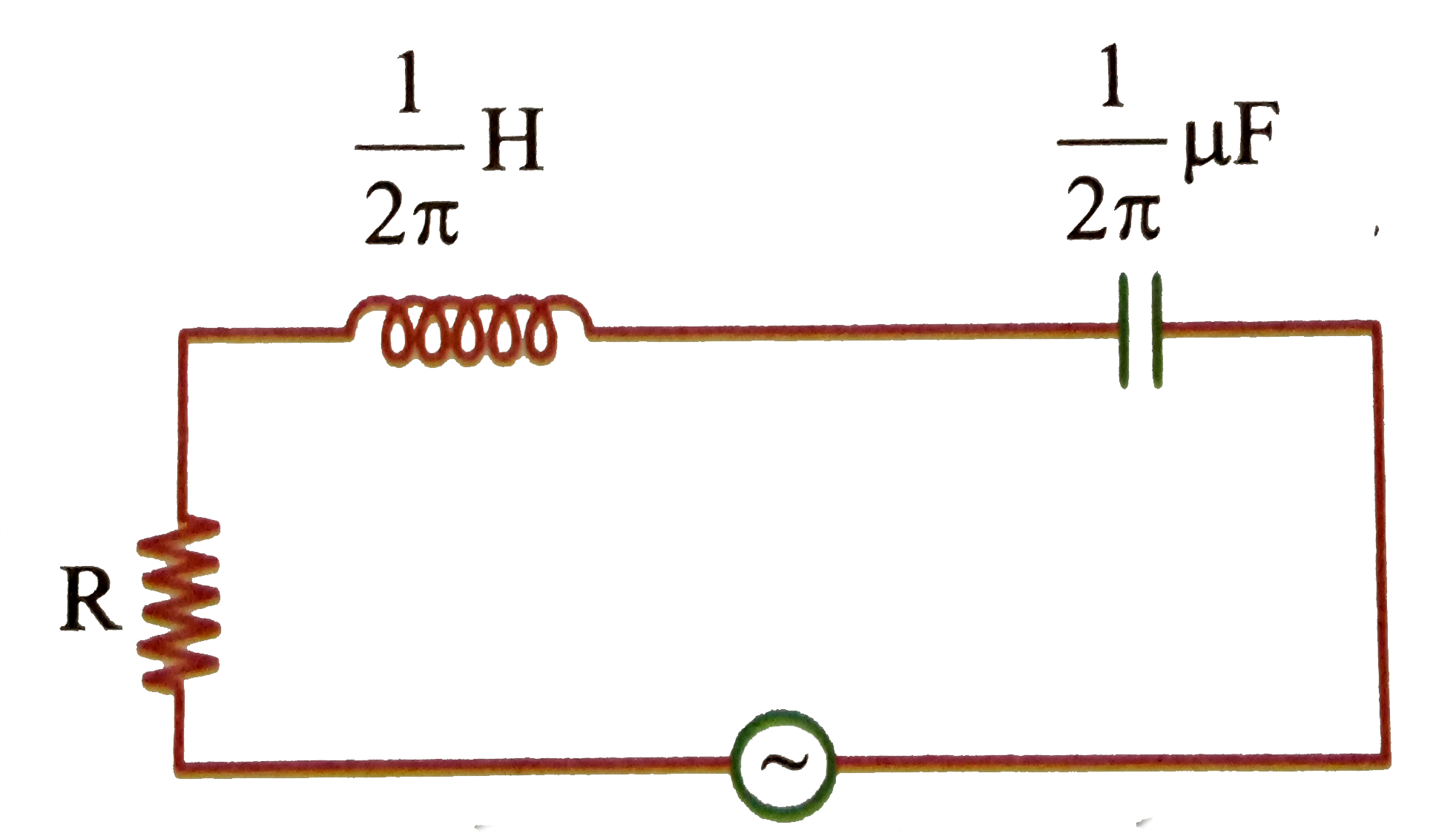For series LCR circuit, the wrong statement is
Applied e.m.f. and potential difference across resistance are in same phase
Applied e.m.f. and potential difference at inductor coil have phase difference of π2.
Potential difference at capacitor and inductor have phase difference of π2.
Potential difference across resistacne and capacitor have phase difference of π2.
The correct Answer is:C
To determine the wrong statement regarding a series LCR circuit, we will analyze the phase relationships between the current and the voltages across the resistor (R), inductor (L), and capacitor (C).
1. Understanding the Circuit:
In a series LCR circuit, the current (I) flows through the resistor, inductor, and capacitor. The voltages across these components have specific phase relationships with the current.
2. Phase Relationships:
- The voltage across the resistor (Vr) is in phase with the current (I).
- The voltage across the inductor (Vl) leads the current by 90 degrees (or π/2 radians).
- The voltage across the capacitor (Vc) lags the current by 90 degrees (or π/2 radians).
3. Analyzing the Statements:
We need to evaluate the given statements about the phase differences:
- Statement 1: "Applied EMF and potential difference across resistance are the same."
- This is correct because Vr is in phase with I.
- Statement 2: "Applied EMF and potential difference at inductor have the same phase."
- This is incorrect because Vl leads I by π/2.
- Statement 3: "Potential difference across capacitor and inductor have a phase difference of π/2."
- This is incorrect because Vc lags I by π/2 and Vl leads I by π/2, which means the phase difference between Vc and Vl is actually 180 degrees (or π radians).
- Statement 4: "Potential difference across resistance and capacitor have a phase difference of π/2."
- This is correct because Vr is in phase with I and Vc lags I by π/2.
4. Identifying the Wrong Statement:
From the analysis, the wrong statement is the one that claims the potential difference across the capacitor and inductor have a phase difference of π/2. The actual phase difference is 180 degrees.
Conclusion:
The wrong statement is: "Potential difference across capacitor and inductor have phase difference of π/2."
In a series LCR circuit, the current (I) flows through the resistor, inductor, and capacitor. The voltages across these components have specific phase relationships with the current.
- The voltage across the resistor (Vr) is in phase with the current (I).
- The voltage across the inductor (Vl) leads the current by 90 degrees (or π/2 radians).
- The voltage across the capacitor (Vc) lags the current by 90 degrees (or π/2 radians).
We need to evaluate the given statements about the phase differences:
- Statement 1: "Applied EMF and potential difference across resistance are the same."
- This is correct because Vr is in phase with I.
- Statement 2: "Applied EMF and potential difference at inductor have the same phase."
- This is incorrect because Vl leads I by π/2.
- Statement 3: "Potential difference across capacitor and inductor have a phase difference of π/2."
- This is incorrect because Vc lags I by π/2 and Vl leads I by π/2, which means the phase difference between Vc and Vl is actually 180 degrees (or π radians).
- Statement 4: "Potential difference across resistance and capacitor have a phase difference of π/2."
- This is correct because Vr is in phase with I and Vc lags I by π/2.
From the analysis, the wrong statement is the one that claims the potential difference across the capacitor and inductor have a phase difference of π/2. The actual phase difference is 180 degrees.
The wrong statement is: "Potential difference across capacitor and inductor have phase difference of π/2."
Topper's Solved these Questions
- BOOK - TARGET PUBLICATIONCHAPTER - ELECTROMAGNETIC INDUCTIONEXERCISE - EVALUATION TEST8videos
ELECTROMAGNETIC INDUCTION
- BOOK - TARGET PUBLICATIONCHAPTER - ELECTROMAGNETIC INDUCTIONEXERCISE - CRITICAL THINKING84videos
ELECTROMAGNETIC INDUCTION
- BOOK - TARGET PUBLICATIONCHAPTER - ELASTICITYEXERCISE - Evaluation test14videos
ELASTICITY
- BOOK - TARGET PUBLICATIONCHAPTER - ELECTROSTATICSEXERCISE - EVALUATION TEST14videos
ELECTROSTATICS
Similar Questions
Knowledge Check
- Question 1 - Select One
In a series LCR circuit
 Athe voltage VL across the inductance leads the current in the circuit by a phase angle of π/2Bthe voltage VC across the capacitance lags behind the current by a phase angle of π/2Cthe voltage VR across the resistance is in phase with the currentDthe voltage across sereis combination of L, C and R is V=VL+VC+VR
Athe voltage VL across the inductance leads the current in the circuit by a phase angle of π/2Bthe voltage VC across the capacitance lags behind the current by a phase angle of π/2Cthe voltage VR across the resistance is in phase with the currentDthe voltage across sereis combination of L, C and R is V=VL+VC+VR - Question 2 - Select One
In series LCR circuit at resonance
APower factor is zeroBPower developed across the resistor is maximumCPower developed across the inductor is zeroDBoth (2) & (3) - Question 3 - Select One
In the series LCR circuit, the power dissipation is through
ARBLCCDBoth L and C
In series LCR circuit at resonance,
View SolutionIn series LCR circuit at resonance,
View SolutionPower factor in series LCR circuit at reasonance is
View SolutionThe value of power factor coso in series LCR circuit at resonance is
View SolutionIn series LCR circuit, the phase angle between supply voltage and current is
View Solution

